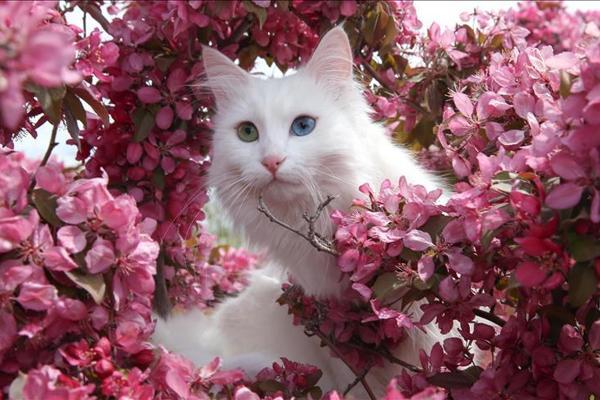Turkish Van cats not only get nine lives, but also pools
VAN – Anadolu Agency


Some cats in Turkey not only get to live their nine lives, but now they will also get to swim in their own specially-designed pools in summertime.
Turkish Van cats, who are known for their odd-eyes and their fluffy white hair, are the lucky feline species in the country set to get an opportunity to swim in three pools specifically designed for their needs.
The Turkish Van Cat Research Center, which comes under the Yüzüncü Yıl University in eastern Van province, is behind the project to build the pools for the special breeds who are known for their love for swimming.
Head of the Turkish Van Cats Center, Abdullah Kaya, said three pools were being made: One each for males, another for females and the third one for kittens.
“We felt we should meet the cats’ need for swimming since we keep them in a confined space,” Kaya told Anadolu Agency, explaining the need for the pools.
The research center, established in 1995, aims to prevent the extinction of the cat breed. It is currently home to 160 Turkish Van cats.
Turkish Van cats can be categorized according to the color of their eyes and their furs. While some are odd-eyed—one blue and the other amber, others have a pair of blue or amber eyes.
Also, while some have completely white fur, others have a dash of brown above their ears, head or on their body.
The male and female Turkish Van cats at the research center are being kept in separate enclosures so that researchers can control their breeding and carry out specific studies.
At the research center, female and male Turkish Van cats are taken care of in separate enclosures and allowed to mate in March.
Kittens are kept in separate enclosures to prevent them from sustaining any injuries by the big cats.
The cat breed is also said to be one of the biggest cultural heritage of the province.
Kaya said his center is critical to preventing the cats’ extinction.
The popularity of Turkish Van cats, which sport a silky fur, a lion-like walk, and a long and fluffy tail, can be gauged from the fact that the research center welcomes 5,000 visitors per month, he added.
